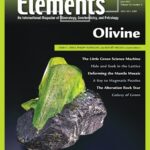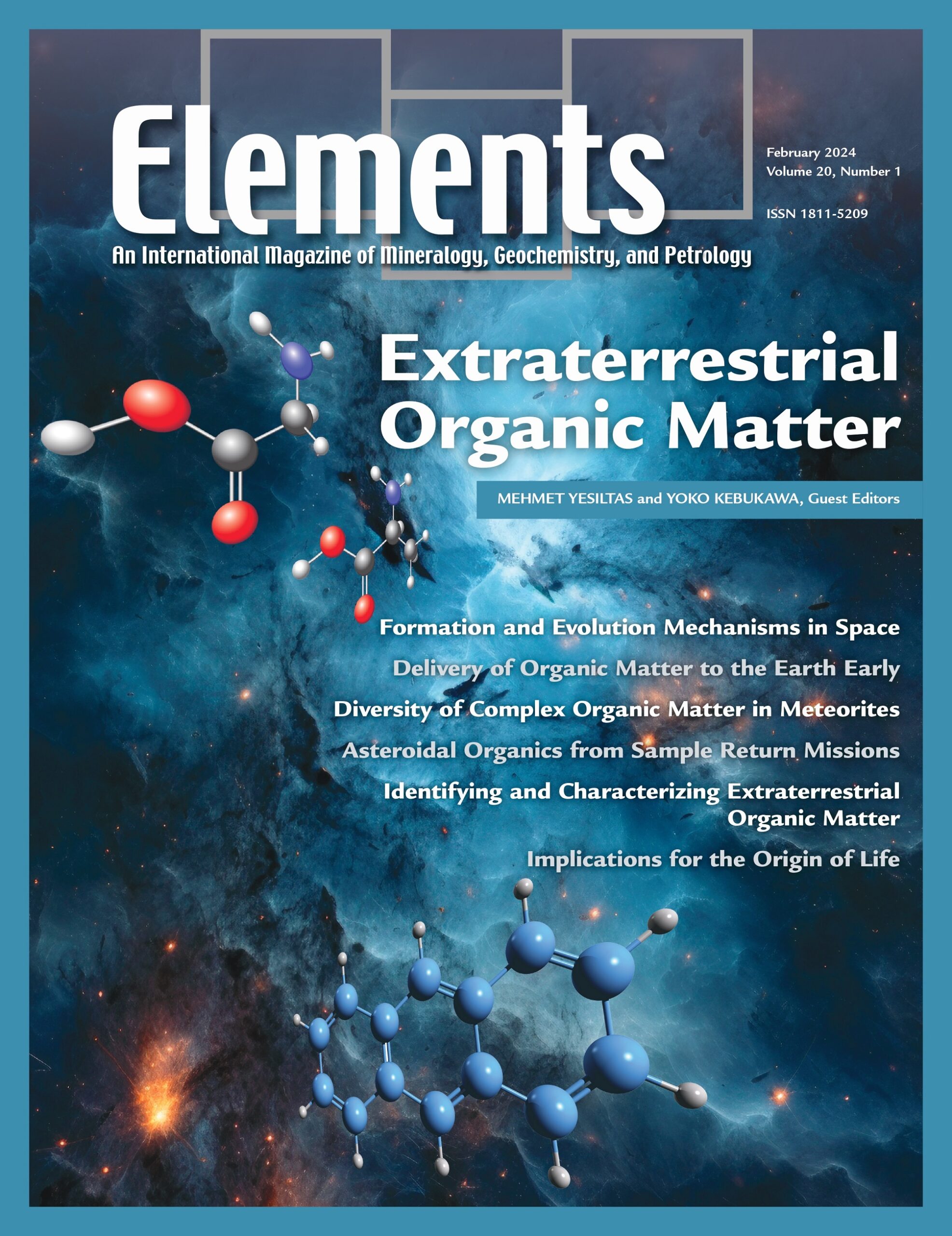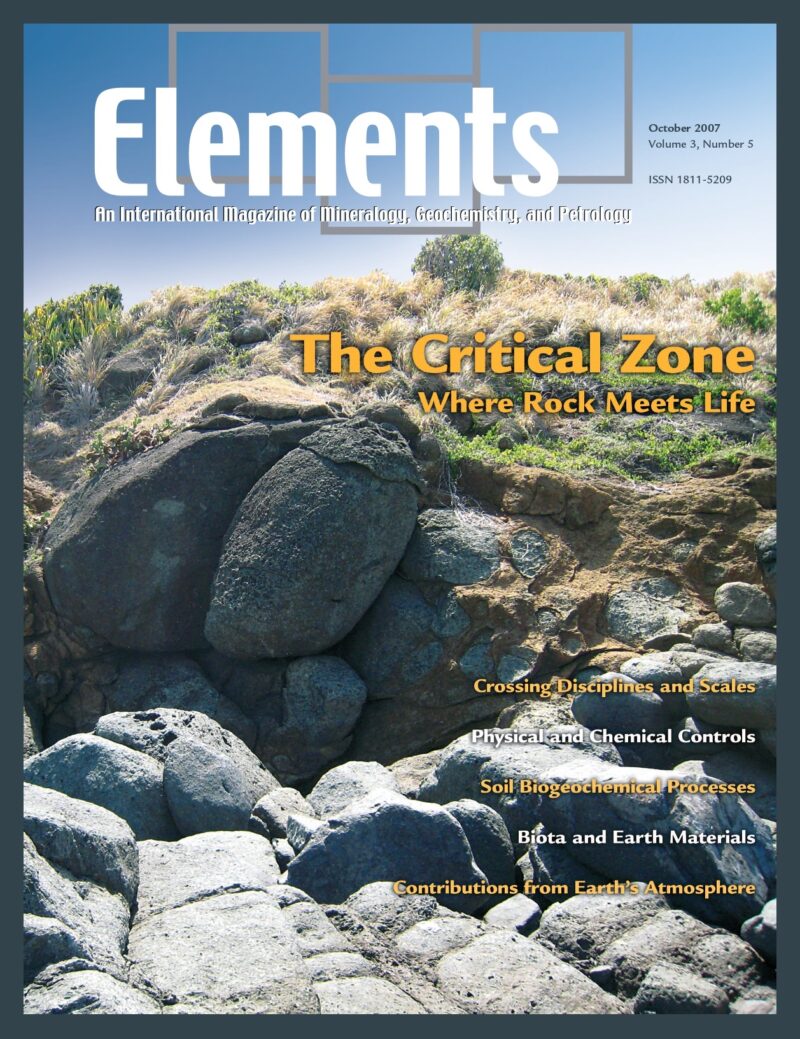
Olivine, June 2023, Vol. 19, No. 3
June 28, 2024
Elements Joint Society Calendar (2025–2026)
July 17, 2024Extraterrestrial Organic Matter, January 2024, Vol. 20, No. 1
$20.00
Extraterrestrial organic matter is found in various extraterrestrial environments and in various forms. It forms in a variety of locations through different mechanisms in space.
Extraterrestrial Organic Matter
January 2024, Vol. 20, No. 1
Extraterrestrial organic matter is found in various extraterrestrial environments and in various forms. It forms in a variety of locations through different mechanisms in space. As such, its nature, distribution, formation mechanisms and locations are of particular interest. Some organic molecules are even considered as key players for the emergence of life on Earth and possibly beyond. Therefore, their detection and characterization can contribute to the understanding of the early solar system evolution as well as the origin of life. Despite decades of work and research, there are still many questions and unknowns on this topic. The aim of this issue of Elements is to offer an overview of the concept of extraterrestrial organic matter as well as the latest scientific findings.
Why You’ll Love Elements Magazine:
- Expert Contributors: Articles written by renowned researchers in the field of geoscience.
- Engaging Content: Join a community of readers who are passionate about Elements.
- Exceptional Quality: Each issue is printed on high-quality paper with stunning visuals and detailed illustrations that bring complex scientific concepts to life.
Order your copy of the January 2024 issue of Elements magazine today and delve into extraterrestrial organic matter.
Related products
-
Energy: A Geoscience Perspective, June 2007, Vol. 3, No. 3
$20.00The issue of energy resources in the future may be one of the most important in the 21st century. Future climate change and the ways to abate it while still supplying needed energy will impact future political relations, world economics, human health, and the environment.
-
Deep Earth And Mineral Physics, June 2008, Vol. 4, No. 3
$20.00The field of high-pressure mineral physics is central to our understanding of the Earth’s interior and its evolution. It is also a field that is rapidly advancing.
-
The Critical Zone, October 2007, Vol. 3, No. 5
$20.00The Critical Zone (CZ) encompasses all fluid, mineral, gaseous, and biotic components from the outer envelope of vegetation down to the lower limit of groundwater. It supports much of life on Earth.




